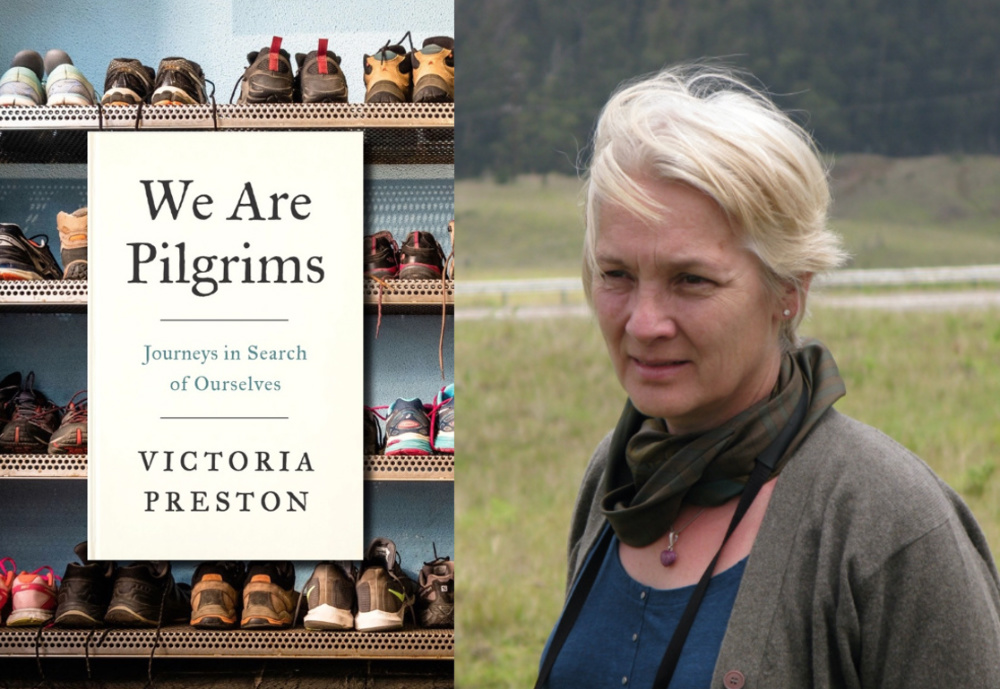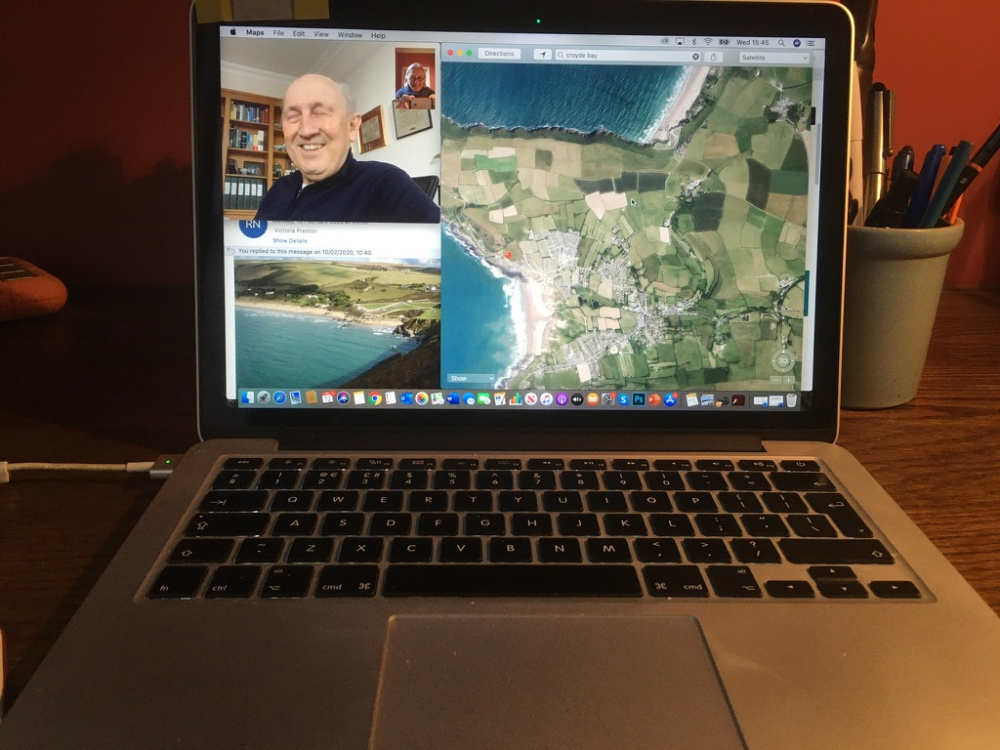
ANGELA YOUNGMAN speaks with Victoria Preston about the inspiration behind her book, ‘We are Pilgrims: Journeys in search of ourselves’…
UK
Going on a pilgrimage has become much harder given the problems of COVID-19 resulting in the increasing popularity of ‘virtual pilgrimages’.
These are pilgrimages made possible by the internet, linking people across communities and continents. All it involves is an internet connection, a willingness by the participants to invest time and effort in the pilgrimage. It is a concept that is increasingly proving popular linking friends across distances, people shielding due to illness and people unable to travel due to physical restrictions. It is also opening up new avenues for meditation and understanding between cultures and faiths.

We are Pilgrims and Victoria Preston. PICTURES: Courtesy of Victoria Preston.
Victoria Preston, author of a book entitled We Are Pilgrims: Journeys in Search of Ourselves which was published during a COVID-19 lockdown, was initially uncertain about the concept.
“The sense of being somewhere is very important in pilgrimages,” she admits. “I had been very sceptical about the idea of a virtual pilgrimage, and very dismissive of it. By the end of the session with Richard [Newton], I realised it could work. It is a different form of pilgrimage. You need to invest in the session to sustain the illusion.”
“I had been very sceptical about the idea of a virtual pilgrimage, and very dismissive of it. By the end of the session with Richard [Newton], I realised it could work. It is a different form of pilgrimage. You need to invest in the session to sustain the illusion.”
– Victoria Preston.
“My friend, Richard Newton, wanted to join me on one of my planned one-day pilgrimages but couldn’t leave the house as he was having chemotherapy,” says Preston. “We used a combination of Face-time and Google maps to [virtually] walk together along the North Devon coastal path to see Lundy Island while Richard talked about a pilgrimage he had made to Robson Island, and Auschwitz, and the profound feelings he had experienced. We spent an hour or two ‘walking and talking’. This ‘time out’ from real life shared many of the characteristics of true pilgrimage – space to think and consider bigger issues, both personal and common to humanity.”
Subsequently, she has taken part in other virtual pilgrimages accompanied by friends.
“Professor George Wilkes of the University of Edinburgh took me on a virtual pilgrimage to Toledo, a centre of learning and multi-faith, a big melting pot for centuries where Christians, Jews, Muslims had lived peacefully side-by-side. I learned about this on my pilgrimage with him, and at the end, felt deeply saddened for all that we had lost.”
“Another virtual pilgrimage was with a friend in a neighbouring along part of the East Anglian coastal path. We used photographs to discuss the walk and meditate as we made it.”
It is not an easy option, as Preston explains.
“You have to understand your motive and why you are doing it. When I am in London, I live near Westminster Cathedral and often go there a lot. I see people come in and stroll around, look around or are meditative and praying. You have got to familiarise yourself before you start the pilgrimage, look up the area and the route, and be prepared to talk and discuss during the virtual pilgrimage.

A virtual pilgrimage session with Richard Newton. PICTURE: Courtesy of Victoria Preston.
Having undertaken numerous pilgrimages in real life, Preston compared the different experiences.
“On a pilgrimage you might be one of thousands of people en route making their own pilgrimage,” she says. “When I went on a pilgrimage to Rome with one of my oldest friends, I was walking down a Roman road that had been used for the last 1500 years. There is a great feeling of sharing in the rest of humanity, being part of something bigger than yourself. A walking pilgrimage to Rome covers many days, and you make connections with other people you have not met before. This gives insights into various reasons and attitudes, the interaction with others and a wider network which you cannot get on a virtual pilgrimage.”
“But on a virtual pilgrimage you can discover things that you might have missed on a normal pilgrimage. It can be much more concentrated. The joy of seeing a location through someone else’s eyes can create a highly focused meditation.”
This article contains an affiliate link.





